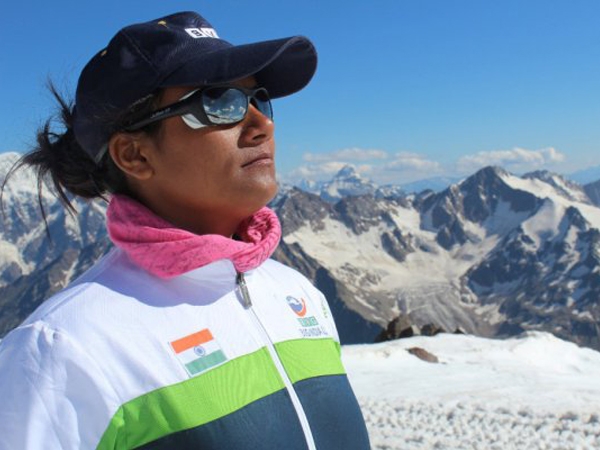
Devadasi and legendary Bharatanatyam dancer, Balasaraswati.
One day ago, the last practicing Devadasi of the 12th century Jagannath Temple in Puri, Sashimani Devi, 92, passed away. Except for a passing interest in the fact that she was the last practicing Devadasi at Puri, Sashimani Devi was a forgotten member of a dying, nay, dead profession and rightly so. While Devadasi system still had a semblance of dignity a hundred years ago, today many families and slave traders use it as an excuse to push young girls into sex slavery and prostitution.
Sashimani Devi, who was married to the Puri Jagannath deity at a tender age used to dance for the temple festivals and processions. But consider this – as a devadasi she did not have a home of her own. As age and related ailments caught up with her, she had no choice but to accept the charity of a well-wisher and take refuge in his house. The authorities had forgotten her, until it was too late. In their defense, of course, the devadasi system was outlawed decades ago.
Long time ago, devadasis had high social standing and a comfortable life. They were women with prodigious skill in fine arts – music and dance, who dedicated their skill in the servitude of one god. They enjoyed much patronage and favour from the kings and the musicians of those periods. In many cases, their homes were the seats of musical advancement as male musicians often gathered together, and brainstormed at these homes. In fact, in the 20th century, we also see examples of famous women who hailed from the devadasi system, who managed to turn it into a big, big positive for them.
MS Subbulakshmi (left) with her daughter, Radha Viswanathan
One such woman was famous singer MS Subbulakshmi. She was not a devadasi, but generations of MS’s family belonged to the Devadasi tradition. That actually gave her an early grounding in music that went on to become her whole career later. Her mother Shanmughavadivu was a devadasi and a singer in her own right, living in the bylanes of Madurai.
Shanmughavadivu often entertained famous musicians of that period and MS grew up hearing a lot of music. It was this background in music that helped MS. At that time, with the exception of devadasis, women were not allowed to perform in public. While MS’s climb to success was not without struggle, she had that one advantage that many other upcoming women singers of her time, like D K Pattammal, with her Brahmin roots, did not have. But in order to make it big in Madras and in professional music, she had to completely abandon her devadasi origins.
MS Subbulakshmi during her younger days, starring in a feature film, Meera.
There were other success stories in music and dance forms, that of Veena Dhanammal and legendary Bharatnatyam dancer, Balasaraswati. These however, are just the glossy exterior of something that has been eroding for a long time. For starters, it is inhuman to force a girl to follow a profession like this against her will. Still, as mentioned earlier, there was some semblance of dignity in those days.
It was the abolition of the royal families in India that sounded the death knell for these devadasis, as the grandeur and fanfare of the royal courts vanished, so did their need for a devadasi’s talent. Banished to the corners of the temple, a new grisly trade in flesh cropped up in connection with the devadasis. But even in those days, it was not a cakewalk. Even in those days, with all the emphasis on their artistic talent, there was no denying the fact that the devadasis also had to provide sexual gratification, if only for select patrons. The term, Nityasumangali or ever auspicious, accorded to them, was merely a license for men to use them.
It probably was this insider’s view that led Dr Muthulakshmi Reddi to champion passionately in the legislature in the 1920s to abolish devadasi system. A firebrand who chose to walk down a different path, Muthulakshmi was the daughter of a devadasi and one amongst eight siblings, born in 1886. An exceptionally bright child, she completed her school, fought at home to access college education and thanks to the patronage of the Maharaja of Pudukottai, she was admitted to college as the first girl student. She went on to study medicine, shunned marriage and decided to dedicate her life to cancer research.
Dr S.Muthulakshmi Reddi, founder, Adyar Cancer Institute
She was so highly regarded that she was nominated as a legislator for Legislative Council, the first woman to do so. There she fought hard and vehemently to abolish the devadasi system, the bill for which was finally passed in 1929 after much heated debate. Muthulakshmi probably did more for the plight of devadasis than any other woman by making it illegal for people to dedicate girls to the temple. She even established a rehabilitation home for devadasi girls who escape the system.
Today, despite devadasi system being illegal, it is still prevalent in many parts of the country. Today the stories are different. They are not of talent pools, but of poor families, pledging to donate one of their girl children to the temple if prayers are answered, or in case of financial trouble. From there it is a short step for many of these pubescent girls, aged 12, 13 or 14 to lose their virginity to the highest bidder, teen pregnancies (because condom is a privilege for many of them) and slowly getting enmeshed deep into the dark world of sex slavery.
So perhaps today, instead of thinking nostalgically of a bygone era and how Sashimani Devi was one of the last of them, we celebrate the fact that she was the last among them and hope other states soon follow suit too. In the meantime, we turn our focus on the dark underbelly of our country, where another form of sex slavery and prostitution has developed in the last few decades, also going by the name of devadasi system. Here’s to hoping that we soon see the end of this system too.
More on>>Balancing Act




